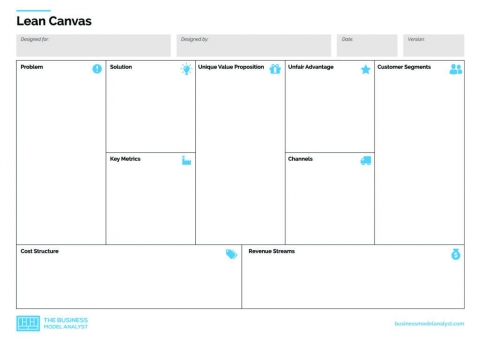Do you want to build an online marketplace startup, but are not quite sure where to get started? Rest assured, you’re in the right place.
Build your online marketplace today!
Benefit from a 7-day free trial, with no obligation or payment card
If you’re curious to learn exactly how to build a marketplace business, this blog post is for you. Behold, the ultimate 2022 guide to building an online marketplace from the ground up.
The demand for digital marketplaces is increasing as more consumers shift their spending habits online. There are plenty of online marketplaces out there, but there’s always room for more as new marketplace startups are catering to special niches and new audiences of eager customers.
By the end of this blog post, you will know what it takes for building a marketplace business. You’ll learn what makes a marketplace a startup, what a marketplace business model looks like, how to build a successful business plan, and even how to build supply and demand for it.
Ready to start building? Let’s dive right in.

How do you start your own marketplace?
So, you have a great idea for a new online marketplace… now what? Starting your own marketplace means building a solid foundation. That includes understanding the industry, choosing a marketplace business model, and most importantly, developing a marketplace business plan.
What is a marketplace startup?
Essentially all businesses begin as a startup, even the biggest marketplaces of our time like Airbnb, Uber, and Amazon.
A startup is defined as a company in its first stages of operations. In these initial stages, founders typically finance their startups themselves while some may look to find marketplace investors to get off the ground (more on that later).
Another differentiator is that startups also tend to focus on one core product or service or an MVP (minimal viable product) to bring to market. So, rather than spreading your business too thin and trying to accomplish everything at once, make sure your marketplace startup has a core focus.
By 2023, 17% of all transactions are predicted to go through e-commerce and marketplaces. That means there is plenty of space for new startup marketplaces to make their debut—like yours! So, what does your business model look like? That’s next.
What does the marketplace business model look like?
There are many different types of marketplaces, so there are multiple marketplace business models to reflect that.
First, there are peer-to-peer marketplaces that enable transactions between people, like Airbnb or Etsy. Other peer-to-peer marketplaces conduct eCommerce transactions to sell goods, like Amazon, or help hire services, like Thumbtack.
The next business models to cover are B2B and B2C. Will your marketplace be B2B and help businesses find other businesses to work with (like Upwork) or will it be B2C and allow vendors to sell directly to the consumer (like eBay)? Some marketplaces can be both!
Another aspect to consider is vertical and horizontal marketplaces.
Vertical marketplaces are focused on one specific niche and can be industry or demographic-specific. With a more focused customer base, it can be easier for a startup marketplace to run successful marketing campaigns.
Meanwhile, horizontal marketplaces offer multiple categories of goods or services catering to a wider span of consumers. Because they often offer popular goods in high demand, they can generate more transactions and more profit. However, horizontal marketplaces have more competition as more product categories mean more overlap online.
How do you build a successful marketplace business plan?
Now that you understand the different business models, you can learn how to build a marketplace business plan. You need to know that your startup will be successful and this plan explains how that will happen.
An easy method of building a marketplace business plan is with the “Lean Canvas.” This modeling tool helps a startup define its most likely and most risky assumptions.
The nine boxes help translate your thoughts into actionable items while taking into account market research to be aware of any threats to success. Keep in mind that proper business plans can take weeks or months to formulate and this is just a quick solution to get you started.

Source: Businessmodelanalyst.com
Another marketplace method is to start with a minimum viable product (MVP) and build from there. Why? It helps validate and develop the business idea to ensure that you’re building a successful business (and not wasting time on the wrong thing). A successful MVP can also attract marketplace investors because it shows that you know how to build a successful marketplace.
The next big component of a business plan is how you are going to fund your business. That’s where marketplace funding comes in. There are really only two options for startups; You can bootstrap your marketplace or begin to pitch to potential marketplace investors. Here are a few pros and cons to each:
Bootstrapping your marketplace startup: Pros and Cons
Bootstrapping a business means the founder pays for it out of pocket. The upside to bootstrapping is that the founder remains in total control of the company. However, the downside is that funding is as limited as the founder’s personal finances. Bootstrapping is a great strategy to get off the ground initially.
Funding your marketplace startup with investors: Pros and Cons
There are many ways to fund your marketplace including venture capital, angel investors, crowdfunding, grants, and loans. The sky is the limit which means unlimited funding potential to scale and grow as you wish. However, the founder will lose full ownership of the business in exchange for capital. Sourcing investors is also hard work with a low conversion rate. This is a great strategy for those who have proved their marketplace startup and MVP and are ready to take it to the next level.
How to build supply and demand for your marketplace
The next step to building a marketplace startup business is generating supply and demand. So, how can you do this?
First, be strategic about the people you attract to your MVP. Your early adopters should be your ideal marketplace customers and vendors. This highly targeted group must be excited about trying out your service so they become advocates for the marketplace and set an example for newcomers.
The next trick to building supply and demand is getting the same ratio of sellers and buyers. It’s important to build both sides of your platform equally in order to build trust, which brings us to our last strategy.
Considering 69% of people think trusting a brand they buy from is important, trust is essential to differentiate your marketplace from its competitors and encourage prospects to engage with your brand. Marketplace trust can be built through implementing things like Terms & Conditions, Escrow, Verifications, and Reviews.
How much does it cost to launch a marketplace?
Marketplace startup costs vary greatly depending on if you develop your own platform or use a marketplace service, like Kreezalid.
Generally speaking, developing your own marketplace MVP will cost at least $20k. This includes hiring developers, months of planning, and expensive maintenance and updates.
On the other hand, using a marketplace building tool costs just a few hundred dollars per month. It takes zero coding to get started and includes all of the features your marketplace startup needs like user and listing management, profiles and dashboards, payment gateways, email marketing, analytics, and more.
Over to you!
Now, you’re ready. We hope this guide answered your questions on how building a marketplace business is possible and gave you actionable steps to turn your marketplace startup into a thriving online venture.
Excited to get started? Try Kreezalid for free and begin building your dream marketplace today.

